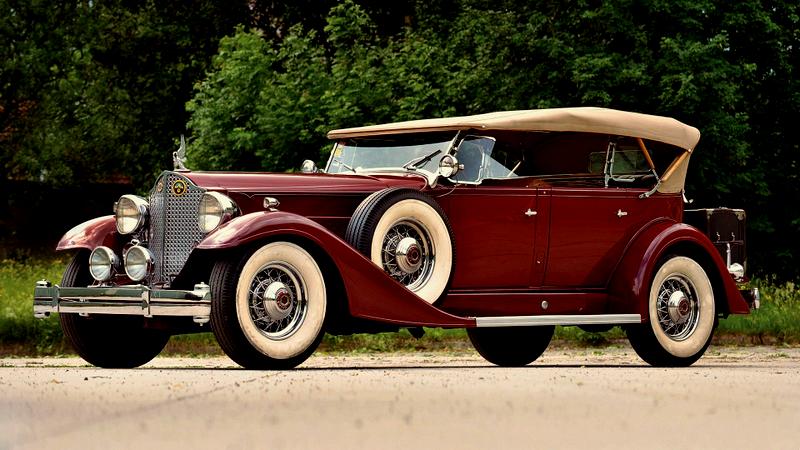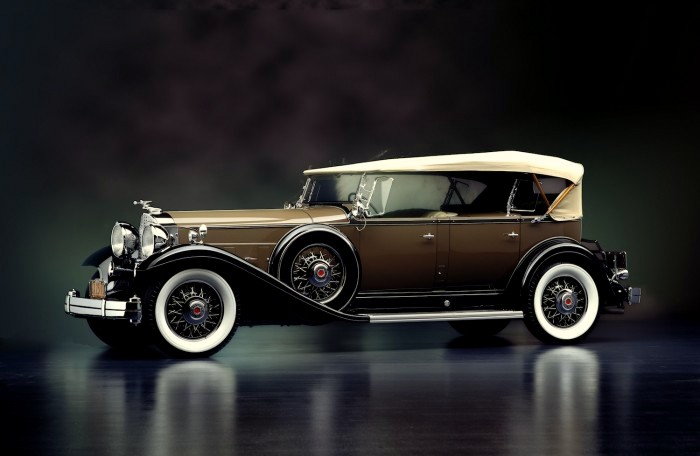A Pack of Packard
Posted on Feb 18, 2017 in Antique | Comments Off on A Pack of Packard
“Some people think luxury is the opposite of poverty. It is not, it is the opposite of vulgarity.” – Coco Chanel
It is strangely ironic that one of the most desirable cars for the Concours scene is also one of the most forgotten by the public at large. Those swanky competitions at Amelia Island and Pebble Beach are generally awash with Packard motorcars, while the public only recognizes its name through the continuing saga of the dilapidated Packard factory in Detroit, Michigan. The Packard, once the premier luxury car of the Edwardian Age has become a mere footnote in automotive history.

Packard began as a small electric company in Warren, Ohio. The company was started by William Doud Packard, brother James Ward Packard, and partner George Lewis Weiss. Packard Electric eventually went on to be purchased by General Motors and exists today as Delphi. Weiss was a stockholder for Winton motorcars. The brothers, who were electrical engineers were challenged to build a better car. The first model was created in 1899, and was a single-cylinder car with a reputation for quality. Eventually, the three formed the Packard Motor Car Company in 1903 and built a strikingly state of the art manufacturing facility on East Grand Boulevard in Detroit, MI.

By 1904 the company surprised the automotive world by offering a four-cylinder aluminum speedster called the “Gray Wolf.” The car was the first offering of an American race car ever made available to the general public. By the 1920’s, Packard created a revolutionary 12-cylinder model, which took the land speed record at Daytona Beach with a speed of 149mph. Packard cars were known for their dependability, speed, luxury and price. Owning a Packard was a ticket to a very exclusive club, costing upwards of $2500.00 at a time when Ford was selling cars for $240.00.

Packard thrived during the 1920’s and 30’s making luxury cars that were a standard for the world. During the wars they build Liberty Aircraft engines (WWI) and licensed the Merlin engine for the P-51 Mustang (WWII), as well a V-12 used on American PT-Boats. The company had a reputation for creating the best high end luxury cars this side of Rolls-Royce, and eventually became the best selling luxury brand in America. When the depression hit, Packard responded with smaller, cheaper cars like the 120, which became a sales success. Though a financial windfall for the company, the smaller cars detracted from the reputation of prestige and exclusivity, and eventually tarnished the brand. The more sought after high end cars were handmade, using the best craftsmanship available at the time, while the low end cars were massed produced and not as profitable.

The senior Packard cars were collected by the elite of the world, and many Hollywood celebrities like Clark Gable and Jean Harlow touted the brand’s reputation for luxury. Notable owners include people as diverse as Franklin Roosevelt and Adolph Hitler, as well as royal houses throughout the globe. American Gangster Lucky Luciano, a Packard owner was actually saved by his car. In 1933, he was sitting in the rear seat of his black Packard Super Eight sedan when another car, driven by gunmen from a rival faction, pulled up beside him and riddled the car with a spray of bullets. Luciano survived due to the heavy metal doors, allowing him to escape while the gunmen reloaded. In fact, The F.B.I. referred to the carmaker as “the Rolls Royce of organized crime.”

By the end of the 1930’s Packard had outlived other luxury car makers like Peerless, Marmon, Stutz, Duesenberg and Pierce Arrow. They endured a heavy rivalry with Cadillac with their V-16 engine, and a challenge from carmakers like Lincoln and Chrysler. While 1947 was an excellent year for Packard and the company was strong financially, the company made some serious mistakes that eventually sealed its fate. One issue was the fact that all cars, whether senior or less expensive models were styled similarly, meaning that the buyer could no longer tell the difference between the cheap and expensive cars. Also, the Clipper was the only model scheduled for upgrades as (rumor has it) the tooling for the senior models were left outside to rust and became useless. Finally, in order to gain sales volume for the years ahead, executives decided to focus on less expensive models, which happened to be less profitable. To compensate, they tried to enter the fleet market, producing taxicabs and police vehicles, which virtually destroyed the image of prestige and exclusivity that the company once held so dear.

In 1949, Packard sold almost 117,000 cars. The next year they sold less than half that amount, and the year after another 100,000 cars. This continued for several years, first 60,000 cars, then 90,000 cars, then 31,000, then 55,000 then 10,000. By 1958 they sold a total of 2,622 cars, and were all but finished. The last true Packard came off the assembly line in 1956, with the 1957 and 1958 models being a re-badged Studebaker President. The Packard name remained on the stationary of Studebaker until a rebranding came in 1962, ushering in a new youthful image to accompany the Raymond Loewy designed Avanti.

The Packard car was truly a thing of beauty. They were massive cars that demand to be noticed, displaying a sense of power and wealth unlike anything else available at the time. The level of perfection in every detail was unparalleled, using the finest craftsmen of the time. Rakish and stylish, they had the subtle undertones of a rogue. The deep dish wire wheels and lower stance of the 1940’s models reflect a person of great power and wealth, with a hidden past of the streets. A Packard was bought by the people who built the world, not the people who just lived in it. It remains a true icon of the “Roaring Twenties” and “Dirty Thirties.”






